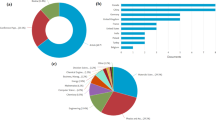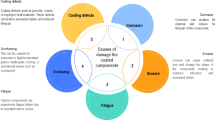Abstract
Hatch has been developing and deploying a model-based coating control system for over 25 years. The resultant physics-based gas wiping process model has been adapted to a wide variety of equipment and coatings now being produced by the major steel producers. As the coating control technology has matured and the processing ability of PLCs has increased, the process model and control system have been migrated from computers to industrially robust PLCs.
The coated product market is moving from traditional zinc and zinc/aluminium coatings and carbon steel substrates to more advanced products with a wide range of coating and substrate properties. At the same time, the relentless demand to lower production costs and increase product quality needs to be met. The Hatch process model, through the addition of techniques such as the parameterisation of the air wiping process, has matured over time to meet these demands. Strip stabilisation and flattening at the wiping zone have become commonplace and can be attained using Electromagnetic Stabilisation (EMS) or Air Floatation Stabilisation (AFS).
Tighter requirements, both in the processing of magnesium-dosed coatings and the introduction of Advanced High Strength Steels (AHSS) and other 3rd Generation steels, require the implementation of even more advanced control strategies. Coating process control is now moving into the realm of managing strip shape effects. Hatch’s model-based coating control system can now include passline tracking using laser measurement techniques and is being further developed to include active crossbow control.
This paper presents the current state of coating control systems and the progress towards the next evolutionary step, which is the use of crossbow modelling and active crossbow correction to manage the strip shape prior to the gas wiping.
Zusammenfassung
Hatch entwickelt und setzt seit über 25 Jahren ein modellbasiertes Beschichtungssteuerungssystem ein. Das daraus resultierende physikalisch basierte Gaswischprozessmodell wurde an eine Vielzahl von Anlagen und Beschichtungen angepasst, die heute von den großen Stahlherstellern produziert werden. Mit der Weiterentwicklung der Beschichtungssteuerungstechnologie und der zunehmenden Verarbeitungsfähigkeit von SPS wurden das Prozessmodell und das Steuerungssystem von Computern auf industriell robuste SPS umgestellt.
Der Markt für beschichtete Produkte entwickelt sich von traditionellen Zink- und Zink/Aluminium-Beschichtungen und Kohlenstoffstahl-Substraten hin zu fortschrittlicheren Produkten mit einer breiten Palette von Beschichtungs- und Substrateigenschaften. Gleichzeitig muss die unablässige Forderung nach niedrigeren Produktionskosten und höherer Produktqualität erfüllt werden. Das Hatch-Prozessmodell hat sich im Laufe der Zeit durch die Hinzunahme von Techniken wie der Parametrisierung des Luftwischprozesses weiterentwickelt, um diesen Anforderungen gerecht zu werden. Bandstabilisierung und -glättung in der Abstreifzone sind inzwischen gang und gäbe und können durch elektromagnetische Stabilisierung (EMS) oder Luftflotationsstabilisierung (AFS) erreicht werden.
Strengere Anforderungen sowohl bei der Verarbeitung von magnesiumhaltigen Beschichtungen als auch bei der Einführung von hochfesten Stählen (Advanced High Strength Steels, AHSS) und anderen Stählen der dritten Generation erfordern die Einführung von noch fortschrittlicheren Kontrollstrategien. Die Steuerung des Beschichtungsprozesses bewegt sich nun in den Bereich der Steuerung der Bandformeffekte. Das modellbasierte Beschichtungssteuerungssystem von Hatch kann nun auch die Verfolgung von Passlinien mit Hilfe von Lasermessverfahren umfassen und wird derzeit weiterentwickelt, um eine aktive Crossbow-Steuerung zu ermöglichen.
In diesem Beitrag werden der aktuelle Stand der Beschichtungssteuerungssysteme und die Fortschritte auf dem Weg zum nächsten Evolutionsschritt vorgestellt, nämlich dem Einsatz der Crossbow-Modellierung und der aktiven Crossbow-Korrektur zur Steuerung der Bandform vor dem Gaswischen.















Similar content being viewed by others
Reference
Masui, T.; Kaseda, Y.; K. Ando: Warp Control in Strip Processing Plant (Iron and Steel Research Laboratories, Sumitomo Heavy Metals), ISIJ International, 31 (1991), no 3, pp 262–276
Dubois, M: Use of Stabilizer Rolls for Strip Flatness While Wiping (Cockerill Sambre), Galvanizers Association, 1998
Brown, H.; Marincic, I.; Pearcey, O.; Roberts, M.; Rudge, D.; Tham, J.: Hatch Coating Equipment, The New Operational Advantages, Hatch Ltd., Galvanizers Association, 2019
Masui, T.; Kaseda, Y.: Control of Buckling and Crossbow in Strip Processing Lines (Iron and Steel Research Laboratories, Sumitomo Heavy Metals), Iron and Steel Engineer, 71 (1994), no 9, pp 14–20
Author information
Authors and Affiliations
Corresponding author
Additional information
Publisher’s Note
Springer Nature remains neutral with regard to jurisdictional claims in published maps and institutional affiliations.
Rights and permissions
About this article
Cite this article
Pearcey, O., Brown, H., Marincic, I. et al. The Evolution of Coating Control Systems as the Need for New Coated Products Expands. Berg Huettenmaenn Monatsh 166, 525–534 (2021). https://doi.org/10.1007/s00501-021-01161-8
Received:
Accepted:
Published:
Issue Date:
DOI: https://doi.org/10.1007/s00501-021-01161-8




